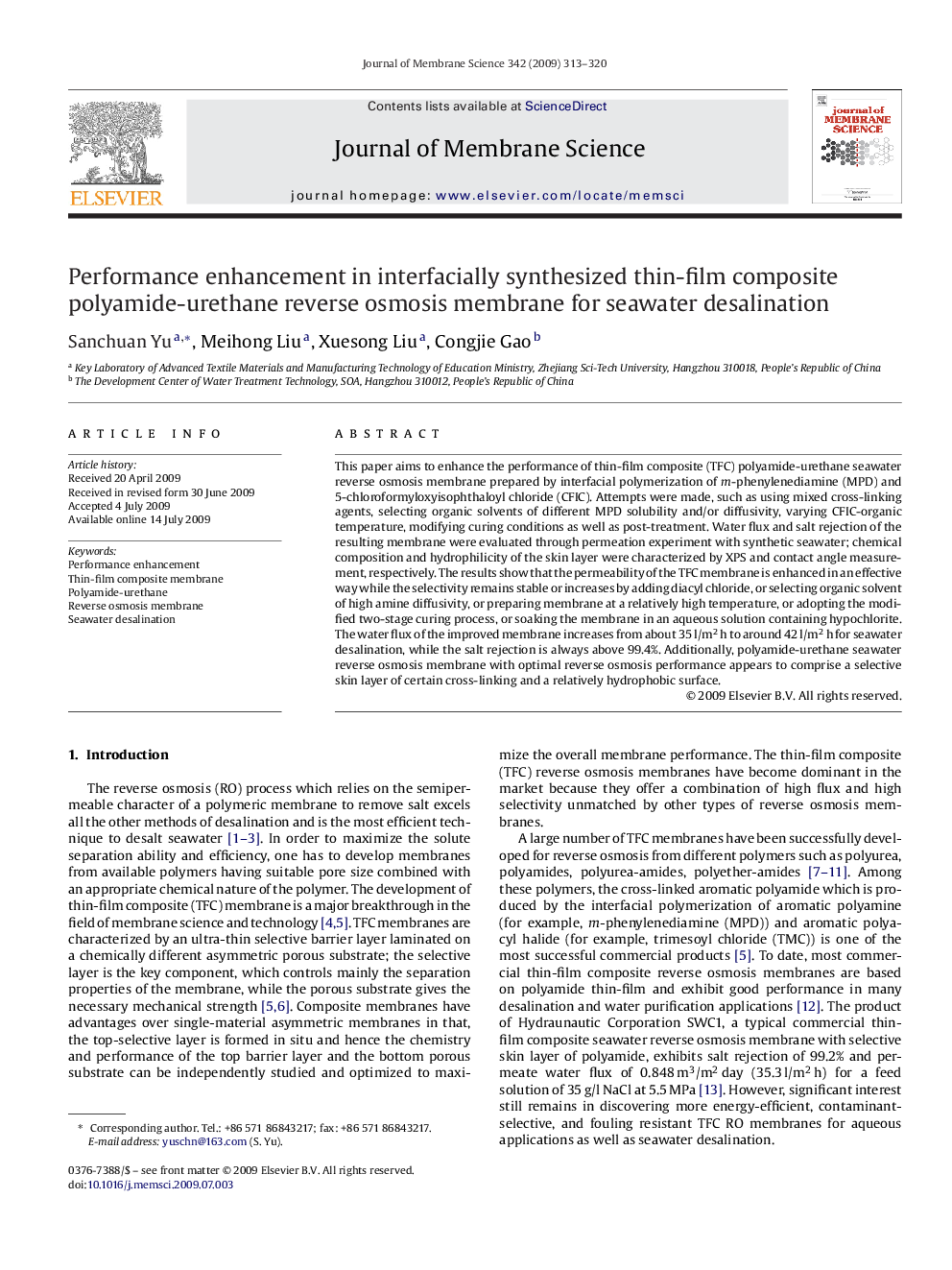| Article ID | Journal | Published Year | Pages | File Type |
|---|---|---|---|---|
| 636902 | Journal of Membrane Science | 2009 | 8 Pages |
This paper aims to enhance the performance of thin-film composite (TFC) polyamide-urethane seawater reverse osmosis membrane prepared by interfacial polymerization of m-phenylenediamine (MPD) and 5-chloroformyloxyisophthaloyl chloride (CFIC). Attempts were made, such as using mixed cross-linking agents, selecting organic solvents of different MPD solubility and/or diffusivity, varying CFIC-organic temperature, modifying curing conditions as well as post-treatment. Water flux and salt rejection of the resulting membrane were evaluated through permeation experiment with synthetic seawater; chemical composition and hydrophilicity of the skin layer were characterized by XPS and contact angle measurement, respectively. The results show that the permeability of the TFC membrane is enhanced in an effective way while the selectivity remains stable or increases by adding diacyl chloride, or selecting organic solvent of high amine diffusivity, or preparing membrane at a relatively high temperature, or adopting the modified two-stage curing process, or soaking the membrane in an aqueous solution containing hypochlorite. The water flux of the improved membrane increases from about 35 l/m2 h to around 42 l/m2 h for seawater desalination, while the salt rejection is always above 99.4%. Additionally, polyamide-urethane seawater reverse osmosis membrane with optimal reverse osmosis performance appears to comprise a selective skin layer of certain cross-linking and a relatively hydrophobic surface.
